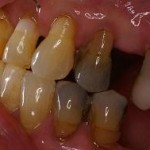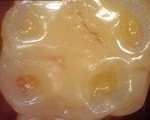Having dental insurance is different than other types of insurance. We call them dental benefits because if used as intended they will help benefit your dental and overall health. Dental benefits will not pay for everything like your medical insurance after you cover your deductible. Your employer decides what type and amount of dental benefits you will have available and dental benefit plans always have a maximum dollar amount that can be used each year. Dental plans have been around since the 1960s. The maximums back then were about the same as today and those maximums have not kept up with the rising cost of health care (they haven’t even kept up with inflation). Most insurance companies put these maximums around $1000, more or less. While this dollar amount doesn’t go as far as it used to, it will usually cover most of your preventative appointments (exams, x-rays, cleaning, fluoride, etc.) and can help subsidize some of the other costs to make your teeth and mouths healthy.
What many people don’t realize that while employers consider this to be an employee benefit, the average employee pays $600 of their hard-earned paycheck per year plus $50 out of pocket for a deductible to receive a $1000 dental benefit plan. Dental benefit plans typically give you one year to use those benefits. The point is that you spend money on your benefits and if you don’t use them within that year, you are just donating money to the insurance companies. Insurance companies make millions of dollars on people that don’t use their benefits. And they don’t give you any of your paycheck back either.
Our practice mission is twofold, one is to make our patients are healthy as possible. We never let insurance companies dictate what we recommend to make you healthy. The other is to be as informative as possible and to communicate openly and honestly with our patients. Trust us, you will not receive a newsletter or email from the insurance companies to let you know that you have unused benefits. Insurance companies make money by not paying out money. We feel that we have a responsibility to keep you informed and as an added service we keep track of your dental benefits. So if you have treatment that you’ve put on hold, now is a great time to maximize your dental benefits plus use any of those remaining flex account dollars as well. We understand that there is always some out of pocket costs for dental treatment, but there is no cheaper time to get a tooth fixed than the present. If a tooth is fractured, broken, or infected with decay, it only gets worse and will cost a lot more to fix.
Fall is upon us, the kids are in school, and the holidays will be consuming our thoughts and time before we know it. If you or someone in your family has treatment that needs done, give us a call today to schedule an appointment.


